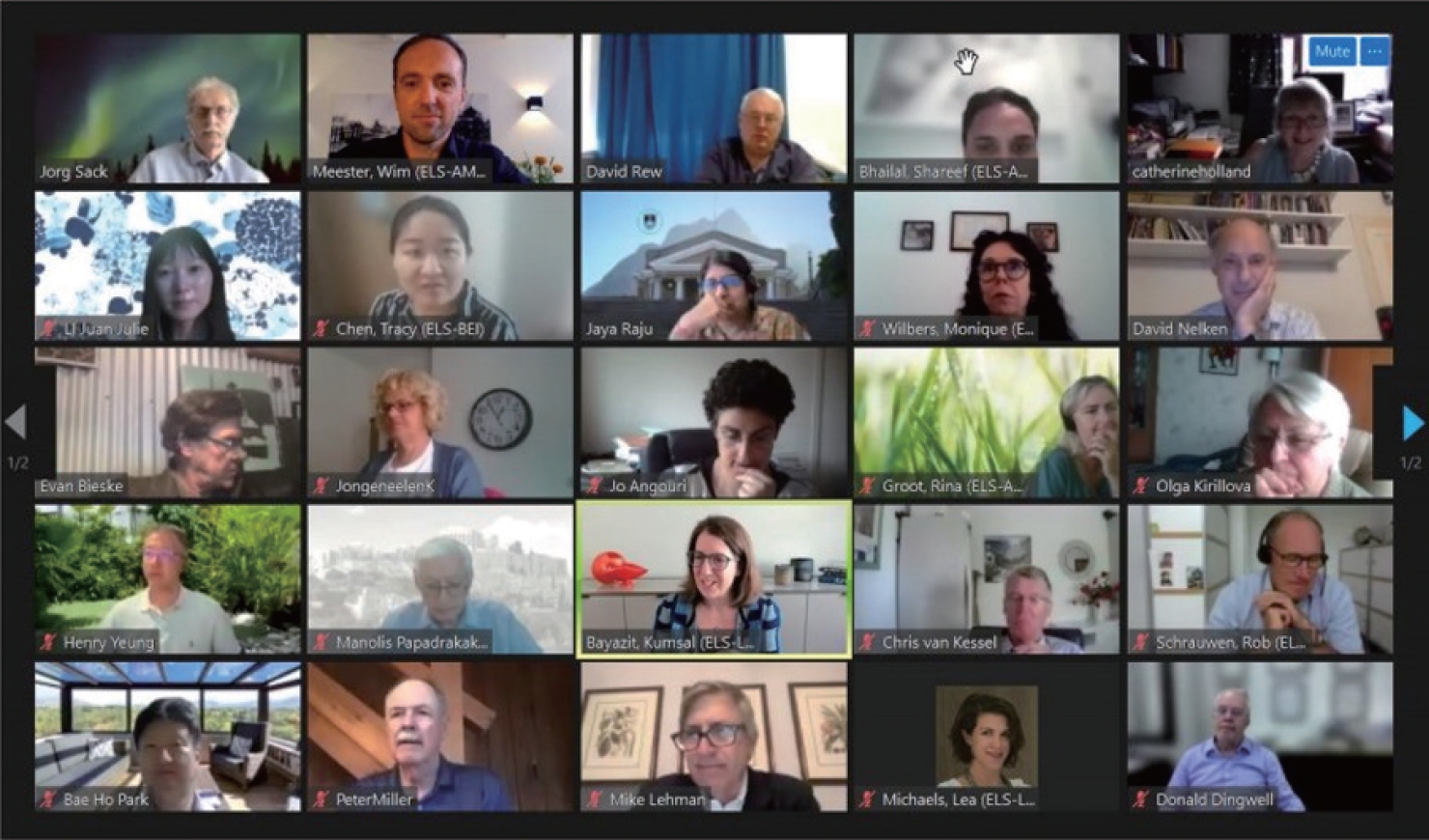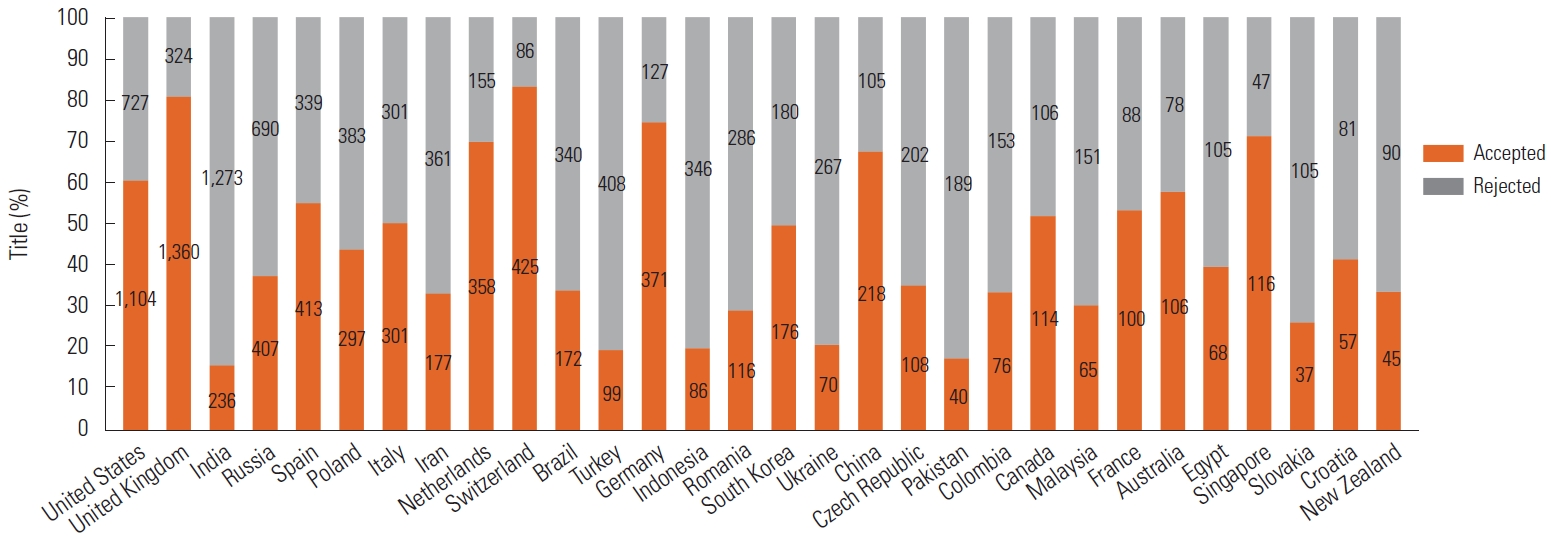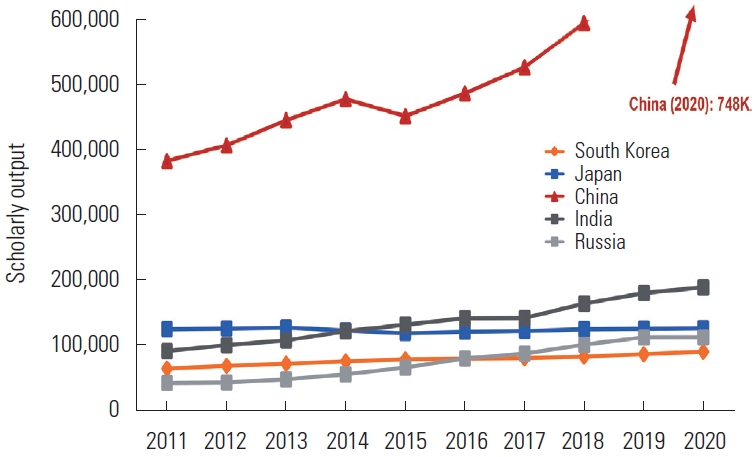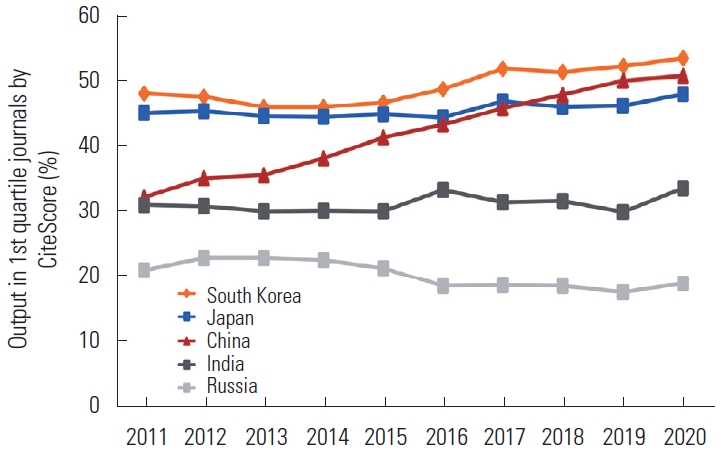Evolution of Scopus over the next decade, including research performance in South Korea
Article information
Introduction
Scopus has helped the world of research by enabling high-value decisions with confidence. In this essay, I would like to discuss the evolution of Scopus over the next decade. Three specific topics will be covered: first, the power of Scopus with trusted coverage of high-quality content; second, research performance in South Korea (hereinafter, Korea); and third, key research challenges for the future. This discussion will be helpful for researchers and editors to understand Scopus’ development and gain more knowledge on its use.
The Power of Scopus with Trusted Coverage of High-quality Content
Scopus was launched as a commercial product in 2004, and there are currently 26,028 active titles in Scopus. The Scopus database was created from different subject specific databases and expanded with additional content over time. Content in Scopus is dating back to as far as 1788 and a backfill project was done to add cited references going back 1970. Scopus is a source-neutral abstract and citation database curated by independent subject matter experts. It features intelligent tools that allow researchers to track, analyze, and visualize scholarly research (Fig. 1). Scopus links with them according to the cited references that connect all the documents. Furthermore, it also profiles the content and creates a full set of profiles, including the author and affiliation. It is possible to find research and understand who has done that research and where it has been done at which institution.
The content in the Scopus database is not selected by Elsevier or the Scopus team itself, but by an external board called the Content Selection Advisory Board (CSAB) (Fig. 2) [1]. CSAB members are experts from all over the world, coming from all different disciplines, and they decide which journals are included in Scopus. Although CSAB members are from all over the world, they are not familiar with every region. Therefore, in some regions, we also have local boards that support the CSAB. One of them is in Korea. We started the Scopus Expert Content Selection and Advisory Committee-Korea (ECSAC-Korea) with the National Research Foundation of Korea in 2011, but in 2019, we transferred the management of that board to the Korean Council of Science Editors (KCSE). The KCSE is now managing the local boards as a partner of Scopus. Professor Hyungsun Kim (Inha University, Incheon, Korea) was the first president of the KCSE to be the local board’s chair; now, this responsibility has been handed over to Professor Bae Ho Park (Konkuk University, Seoul, Korea). During the COVID-19 pandemic, a virtual meeting was held with the KCSE, featuring a discussion about the local board for Scopus. Over the past 10 years, many titles from Korea have been suggested to Scopus and reviewed for inclusion in the Scopus database. The CSAB members make those decisions.

Screenshot of Scopus Content Selection and Advisory Board (CSAB) members, local board members, and staff who attended the CSAB meeting in 2021.
Fig. 3 shows the countries where these titles come from, the number of titles accepted, and the number of titles rejected. As for Korea, 176 titles have been accepted for Scopus over the past 10 years. Title review results from Korea are presented in Fig. 4, including the number of titles suggested each year, the number of titles reviewed that year, and the number of titles accepted for inclusion in Scopus. Particularly in the last few years, there has been an increase in the number of titles suggested from Korea, an increase in the number of titles reviewed from Korea, and an increase in the number of titles selected for Scopus from Korea. In total, there are now 264 active journals from Korea in the Scopus database.

Scopus journal title review results from the top 30 countries with the most titles reviewed from 2011 to 2021. Numbers represent the amount of titles accepted or rejected for that country. In total 18,176 titles were reviewed (2011–2021 year to date), of which 8,432 (46%) were accepted.

Scopus journal title review statistics for South Korea (2011–2020). A total of 264 active titles from South Korea based publishers are covered in Scopus.
The assistance of local boards such as ECSAC-Korea and managing partners like KCSE has been highly successful, increasing the number of titles from Korea that have been accepted for inclusion in Scopus. Given this recent history of title review, we can be confident that even more titles from Korea will be deemed suitable for inclusion in Scopus in the next decade. These titles will also be selected by the CSAB.
How is Korea’s Research Performance?
There is interest in understanding Korea’s research performance using Scopus data. The first aspect to consider is the scholarly output, including articles, review papers, and conference papers, as well as output per year compared to countries such as Japan, China, India, and Russia. In recent years, output has grown to almost 750,000 items per year. Meanwhile, the number of documents produced by authors in Korea has risen from about 65,000 to around 90,000 per year (Fig. 5). This is promising, although countries like China, India, and Russia have higher growth rates. It is encouraging to see that Korea is investing in science, leading to more articles being produced.

Scholarly output for South Korea, Japan, China, India, and Russia in Scopus from 2011 to 2020. (source: Scopus data, articles, reviews, and conference papers only; September 2021).
It is also possible to see the output of articles, reviews, and conference papers per year by journal quartile and using the CiteScore journal metrics. The first quartile (Q1) is the highest. Around 50% of the output from Korea has been published in Q1 journals, based on CiteScore. This means that Korean researchers are publishing their articles in top journals. Compared to other countries, this ratio for Korea is the highest. The proportions are growing for other countries, such as China, but remain lower than Korea’s (Fig. 6).

Output in the first quartile journal by CiteScore (%) for South Korea, Japan, China, India, and Russia in Scopus from 2011 to 2020 (source: Scopus & SciVal data, articles, reviews, and conference papers only; September 2021).
I would also like to share the results of the field-weighted citation impact (FWCI), which is the ratio of total citations received to total citations expected based on the average of the subject field [2]. For an FWCI, 1.0 is the average, so anything above 1.0 is above average, and anything below 1.0 is below average. Korea’s FWCI is slightly above 1.0, between 1.05 and 1.10. Over the past few years, it has been above the world average and higher than other comparable countries (Fig. 7). In 2020, China’s FWCI became slightly higher than Korea’s. This is important because the FWCI is an essential metric increasingly used by governments for research assessment. In Korea, the FWCI is also included in research assessment practices. It is encouraging to see that Korea already has a high FWCI, which is expected to grow over the next 10 years.

Field-weighted citation impact (FWCI) for South Korea, Japan, China, India, and Russia in Scopus from 2011 to 2020 (source: Scopus & SciVal data, articles, reviews, and conference papers only; September 2021
For more detailed information, please refer to the “Korea Research and Innovation Power House” report published in March 2021 [3]. This report provides more detailed information about Korea’s research performance and prospects, as well as essential areas to focus on.
Key Research Challenges for the Future
We are trying to address critical challenges with Scopus: efficiently discovering the most relevant research, identifying experts and collaborators, evaluating and demonstrating impact, research strategy decision-making, and applying and analyzing funding. These challenges are taking place in the research community, and Scopus is trying to address them by providing more signals and data around research.
Incorporation of preprints into Scopus author profiles
We are also focusing on incorporating preprints into Scopus author profiles. Preprints are not peer reviewed, but they are a good indication of what someone is working on and provide an early signal of research in a particular field. This can help researchers understand a specific research field’s trends and find potential collaborators. Preprints are only added to the Scopus author profiles and are separated from the regular content.
Incorporation of awarded grants in Scopus author profiles
We have recently started adding awarded grants to the Scopus author profiles. These grants give early signals about a researcher’s topic and can be used to find collaborations, identify emerging issues, and support grant submission strategies. Grants are added to the author profiles and separated from other content types. This feature is in an early stage, and we have coverage of funders from the United States. The solution is initially a beta solution for the United States market (approximately 100 funders). Over the next few years, we will expand to include awarded grants from other regions, such as Europe, Australia, New Zealand, and Asia.
Finding experts via the Scopus People Finder
In the next few months and years, we will focus on providing more information about people in Scopus. Scopus is optimized for finding documents and known authors, but we realize that providing more data about researchers would be essential. Therefore, we want to combine these signals and organize them differently through the Scopus People Finder. This will make it easier for people to find researchers and can be beneficial for tasks like reviewing promotions, recruitment, grant applications, and workshops. It will also increase the diversity of the people researchers are working with and help researchers find people with different backgrounds that are still relevant to their research.
Conclusion
The Scopus team has strived to provide valuable literature content and efficient and helpful journal metrics for editors and researchers since 2004. This essay highlighted the evolution of Scopus, focusing on Korean researchers’ performance and the platform’s future tasks. It also discussed the incorporation of preprints and awarded grants in Scopus author profiles, as well as the introduction of the Scopus People Finder for finding experts. As the needs of Scopus users evolve, more innovative and user-friendly features will be proposed and implemented. As the manager of Scopus, the world’s largest indexing database with various journal metrics, I am proud of its achievements. The continuing development of this unique database relies on the suggestions of researchers and editors. I encourage their active participation in the continuous progress of Scopus.
Notes
Conflict of Interest
Wim J.N. Meester is a Senior Director of Product Management at Elsevier. No other potential conflict of interest relevant to this article was reported.
Funding
The author received no financial support for this article.

